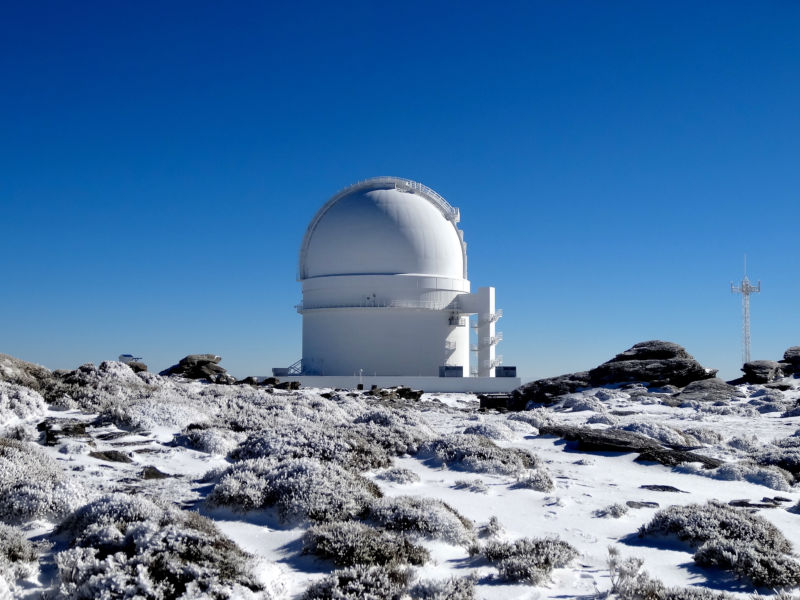
Enlarge / The Calar Alto Observatory in Spain, which was used to discover this planet. (credit: Pedro Amado/Marco Azzaro—IAA/CSIC)
One of the difficulties in studying our Earth and the Solar System in which it resides is that you’re generally working with a sample size of one. But astronomy is increasingly loosening that restriction with clearer and clearer pictures of worlds around other stars. Within the wild variety of the cosmos, the rest of our galaxy is looking like an experiment in an infinite laboratory, generating exosolar systems with all sorts of odd combinations of planets. When one of those combinations bucks your prediction, there’s a good chance you’re about to learn something.
A diminutive star tagged GJ 3512, about 31 light years from us, seems to present one of those opportunities. A group of researchers participating in the CARMENES survey have discovered a surprising gas giant planet at least half the size of Jupiter orbiting this wee star.
Small star, big planet
The survey scans for planets around small, M-type dwarf stars using Earth-based telescopes. it's doing that not by looking for changes in a star’s brightness as a planet orbits in between, but by looking for tiny shifts in the star caused by gravitational tugs from its planets. Just as the familiar Doppler effect causes a siren to rise in pitch as it nears you and lower in pitch after it passes, the star’s movements cause a Doppler shift in the wavelengths of light we receive from it.
No comments:
Post a Comment